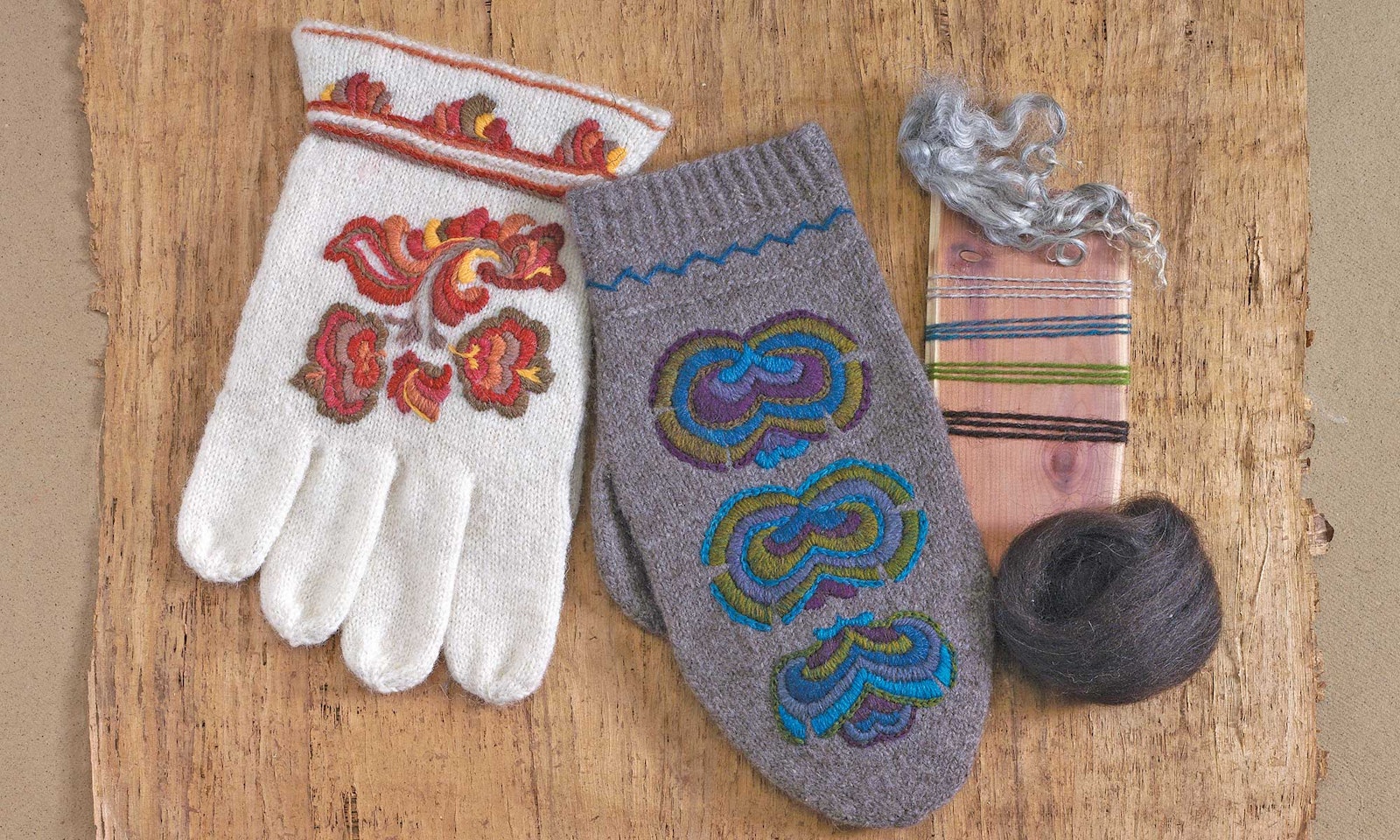I am particularly enamored with Norwegian mittens and the stories they hold. During the nineteenth century, Norway was rapidly changing, and we can see many of those changes manifested in the mittens from that era. We can see the impacts of industrialization and new technologies as synthetic dyes and mill-spun yarns became available. We can also see interest in regional identity and traditional motifs.
Norwegian Mittens in the New World
In 1814, Norway gained its independence, and by the 1830s, people were migrating to North America by the thousands in search of new opportunities. Many of these immigrants took small cultural mementos, like mittens, with them as they forged new and unknown paths. And some of those mittens that were carried across the sea by boat in wooden trunks eventually made their way into the collections of some wonderful museums, such as the Nordic Heritage Museum in Seattle, Washington, and Vesterheim Norwegian American Museum in Decorah, Iowa. You can see some of these very special textiles in the Vesterheim online collections.
 Sport Mittens from Norway: The Northern Star Design by Lalla Frolich Miller was included in the January 1933 issue of Needlecraft: The Home Arts Magazine. This pair of Vintage Norwegian Mittens was knitted by Marge Yee-Norrander, following the instructions as they appeared; neither corrections nor alterations were made. You can find the pattern in the Fall 2012 issue of Knitting Traditions. Photo by Joe Coca
Sport Mittens from Norway: The Northern Star Design by Lalla Frolich Miller was included in the January 1933 issue of Needlecraft: The Home Arts Magazine. This pair of Vintage Norwegian Mittens was knitted by Marge Yee-Norrander, following the instructions as they appeared; neither corrections nor alterations were made. You can find the pattern in the Fall 2012 issue of Knitting Traditions. Photo by Joe Coca
You Can Spin and Knit Norwegian Mittens
In Norway, as in other parts of northern Europe, many mittens were handknitted for sale using approved measurements, patterns, and yarns, while others were born from the knitter’s creative blend of cultural and personal aesthetic. Handspinners and knitters are often quite innovative people—making use of new materials that are available and finding new uses for traditional materials. Today, we can continue this tradition as we blend techniques, tools, and fibers from around the world to create textiles that are thoroughly modern. I am currently spinning Gotland top from the United Kingdom on a spinning wheel made in Canada for a Norwegian-inspired mitten that I will embroider with yarn spun from the ewes grazing outside my window in Indiana—textiles connect us all.
 Kate designed these Telemark Rose Gloves for Spin Off Summer 2014. Photo by Joe Coca
Kate designed these Telemark Rose Gloves for Spin Off Summer 2014. Photo by Joe Coca
One of my absolute favorite places to be is deep within the storerooms of a museum with my research notebook and white gloves, carefully trying to peer inside an exquisite mitten. Mittens, gloves, and other handcoverings can be not only a trove of technical information but also endlessly inspiring. Looking closely, we can see how these handcoverings were worn and repaired, how the knitter preferred to increase or decrease stitches, and what types of fibers and yarns were used. And there are always the questions that will often remain unanswered—did the original knitter knit these for themself or for someone they loved? How did they end up in the museum collection?
Read more about Norwegian Mittens in the following issues:
Knitting Traditions, Fall 2012
Spin Off, Summer 2014
Kate Larson, editor of Spin Off, teaches handspinning around the country and spends as many hours as life allows in the barn with her beloved flock of Border Leicesters.
Originally published September 17, 2013; updated July 26, 2018; updated October 7, 2024.

